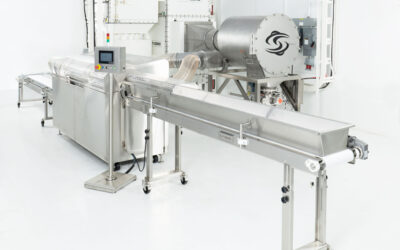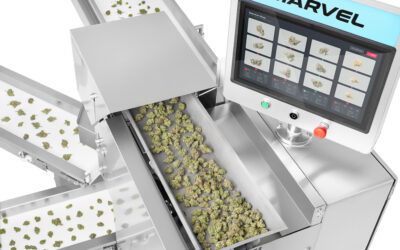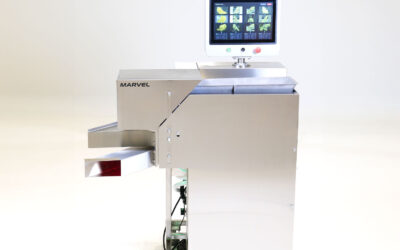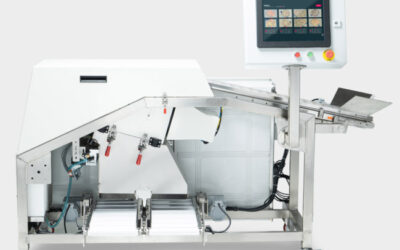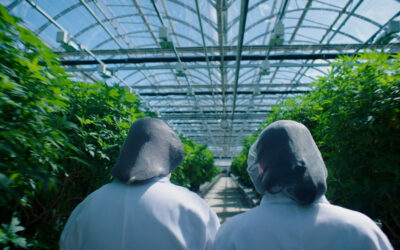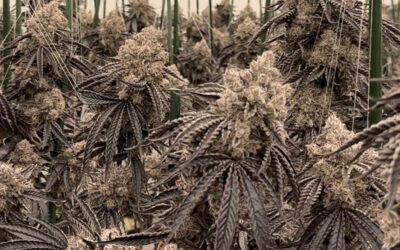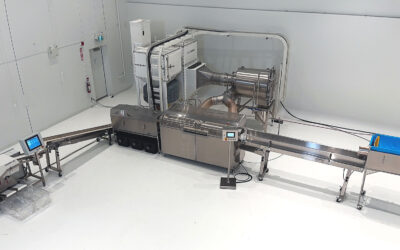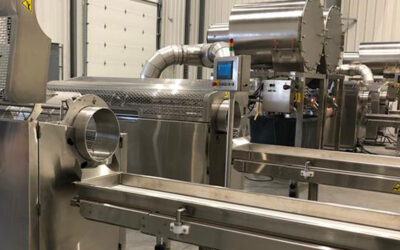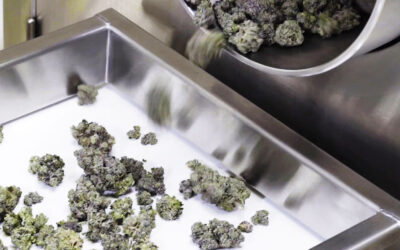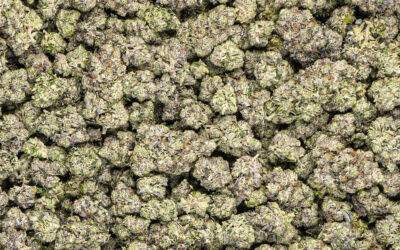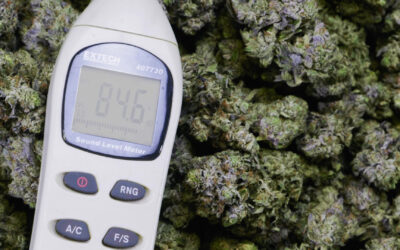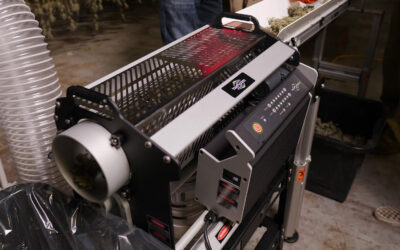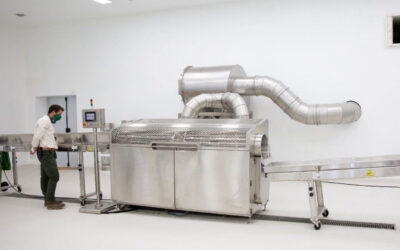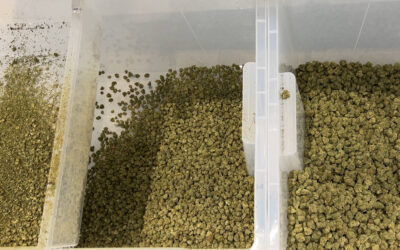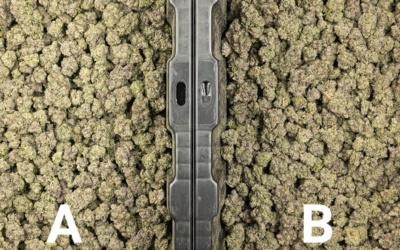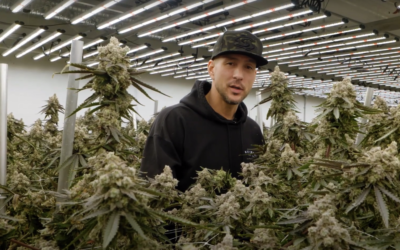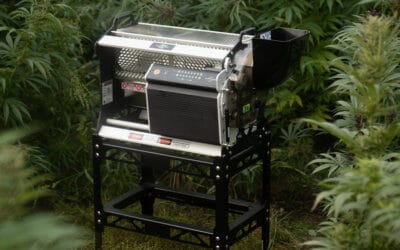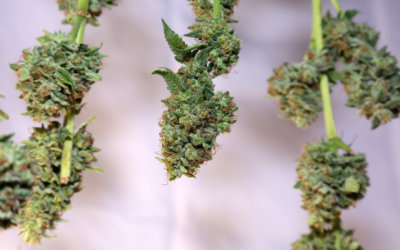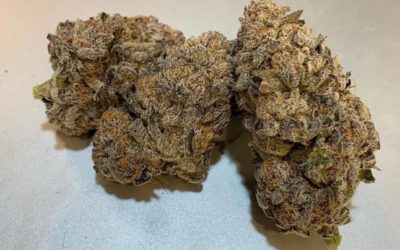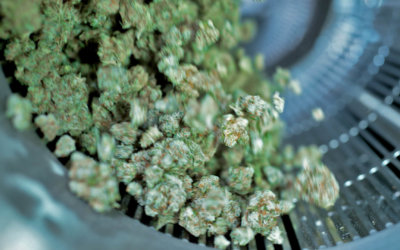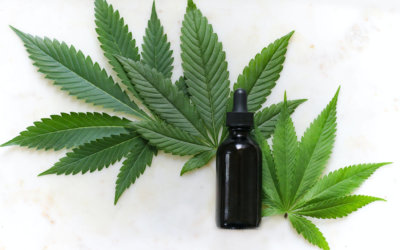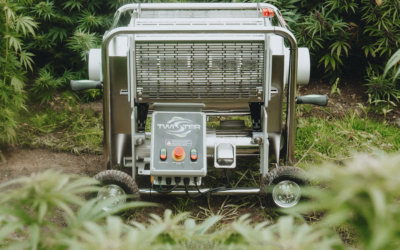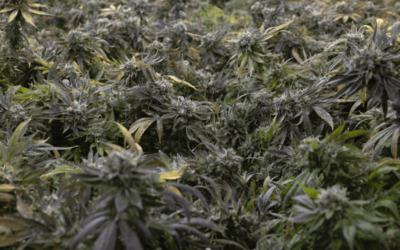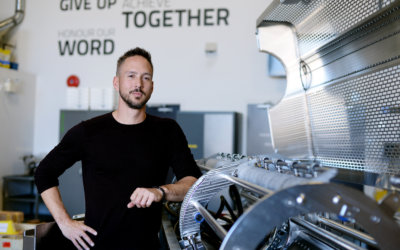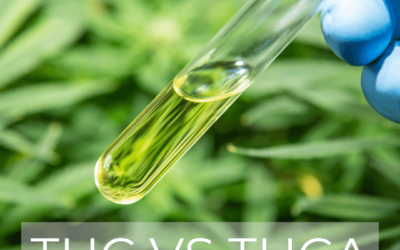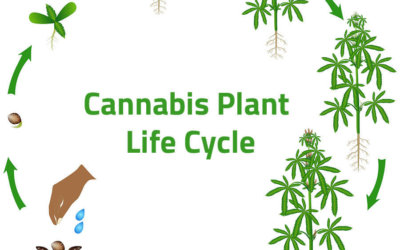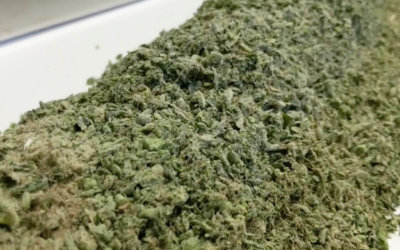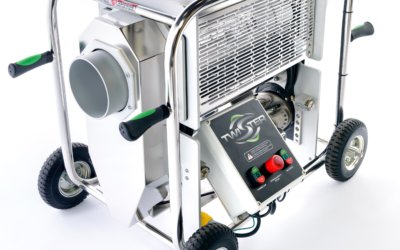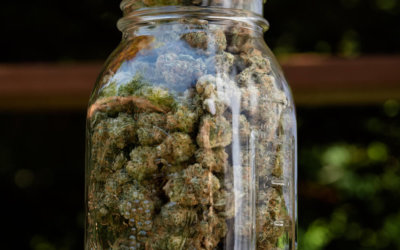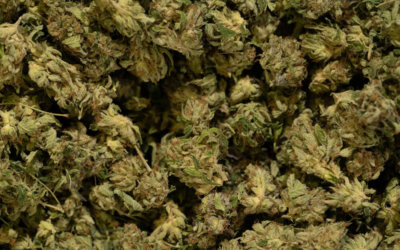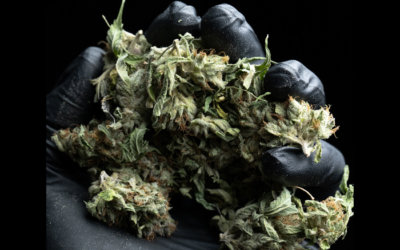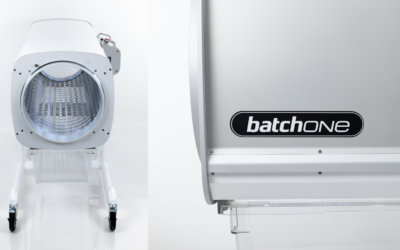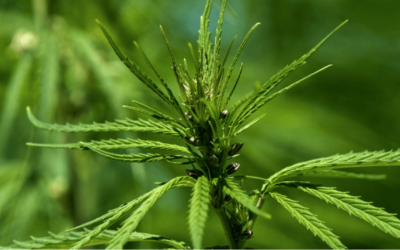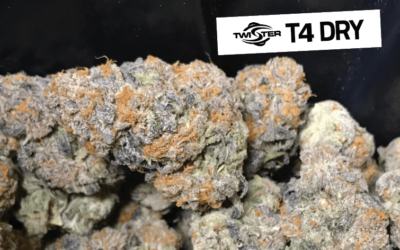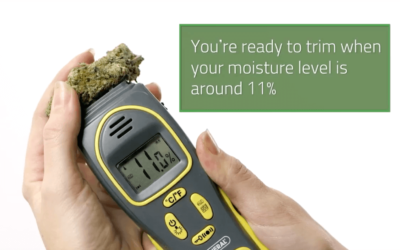How does cannabis dust affect air quality?

As the cannabis industry evolves, many regions are now tightening up their work-safe practices. Those companies who are not protecting the safety of their employees are inviting injury, fines, and staff distrust. A common concern in industrial cannabis is the quality of air in post-harvest processing. Particularly processing dried cannabis. The keif or resin dust that gets in the air can quickly cause respiratory issues in the same room. Most HVAC systems are not equipped with HEPA filtration or standard filtration sufficient to remove airborne particulate.
There are numerous reports of asthma attacks and respiratory illness from cannabis dust – particularly from cannabis grinders and low-quality milling machines. Cannabis is often ground or milled for pre-rolls or extraction.
In large scale commercial cannabis processing, it is important to seek cannabis trimming systems that have HEPA filtration if they require a blower or vacuum system. Many cannabis trimming systems move 800cfm – 5000cfm of air which can be heavily contaminated with cannabis dust. This dust is an allergen and a respiratory danger to many people.
Many trimming machines will have a cloth or mesh filter bag. Those that are more advanced will use a cyclone system with a series of mesh filter bags. The best systems will use a cyclone system, a mesh filter bag, pleated filtered and HEPA filtration to ensure those working in the post-harvest trimming area have hospital quality filtered air.
OSHA has specific standards for air quality related to airborne dust and particulate matter. The general industry standard is 29 CFR 1910.1000, Air Contaminants, which sets limits for exposure to various substances, including dusts, fumes, mists, and fibers. The standard for construction is 29 CFR 1926.55, Air Contaminants, which is similar to the standard for general industry.
Furthermore, as cannabis dust does have a small explosivity risk, ensure your equipment provider is able to provide adequate testing data to ensure their equipment does not create a hazard.
See the Latest Cannabis News
T-Zero: One Machine, No BS
We’re pushing 125 to 150 lbs/hr on the regular and hitting 200 sometimes
Why We’re Ditching ****** and Rolling Back to Twister
Invested in a setup thinking it would work but it didn’t and switched to Twister
The Ferrari of Trimmers: Twister T-Zero PRO
They pulled the trigger on a T-Zero for their harvest
From Chaos to Control: Why These 2 Producers Bet Big on the Twister T-Zero
Two producers hit the wall during harvest season one overwhelmed, the other burned out…
Automated Grading in Cannabis: Revolutionizing Quality Control with Advanced Vision Systems
Introducing a state-of-the-art automated cannabis grading machine, revolutionizing quality control.
Unveiling the Future: Marvel Gen 2
We are thrilled to announce the arrival of Marvel Gen 2, the latest...
A Marvel-ous Evolution in Cannabis Consistency
In today's fast-paced market, consumers demand consistency. They...
The Ultimate Nerds Guide to Curing Cannabis
We’ve created multiple guides to curing cannabis to share with you.
The Dawn of a New Quality Era in (Grading) Cannabis
As the cannabis industry blossomed, consumers became ever more...
Elevate Your Cannabis Production Quality: Unlocking the Power of Continuous Employee Training
In today’s cut-throat cannabis market, merely achieving exceptional...
The Complete Guide to GMP Certification in the Cannabis Industry
GMP is a popular topic among the cannabis industry and its...
Cannabis Automation
Why Cannabis Automation is Important Cannabis automation has become...
The Hidden Costs of Commercial Cannabis Trimming Machines
Uncovering the Hidden Costs of Commercial Cannabis Trimming...
Trimming Machine Throughput Called Out
As the cannabis industry continues to develop, there is a lack of...
Cannabis Flower Brands with Consistency Win
Cannabis flower brands that are consistent have a much better chance...
How Loud is a Cannabis Trimming Machine?
Are Cannabis Trimming Machines Loud? The noise from cannabis...
How Important is Uptime in Cannabis Processing Facilities?
Understanding the Importance of Uptime in Cannabis Facilities Uptime...
How to Choose a Cannabis Trimming Machine
As the cannabis industry continues to grow, so does the need for...
Cannabis Size Sorting
How is Cannabis sorted? Sorting Cannabis has long been a practice...
Protecting Cannabis Brand Reputation
Grammy Award nominated Don Carlos – Protecting a brand As the owner...
Take the Trim Challenge – Hand Trim vs Twister
Think you have what it takes? One of the images below is trimmed by...
Trimming Craft Cannabis with Twister T4
*Transcribed from video above The Twister Grow Facility -We don’t...
Twister T4 Trimmer Spotlight and Giveaway
Choosing the right trimming machine for your cannabis depends on...
What to Consider when Drying and Curing Cannabis
Drying can be one of the most challenging parts of the cannabis...
Behind The Harvest – Ep 01 w/ Justin Cooper of Growing Exposed
In the inaugural episode of Behind The Harvest, Paul is joined by a...
Keirton Named One of Canada’s Top Small and Medium Employers for 2021
It’s with immense pride that we announce that Keirton has been named...
Cannabis Growth Considerations: How to Prevent Post-Harvest Rot
After a lengthy growing season, you’re finally harvesting your crop...
How to Trim Cannabis Plants: Ensuring Cannabinoid Potency and Quality
The quest for high quality cannabinoids doesn’t end when the plant...
Global CBD Statistics 2021
Global CBD Statistics 2021 CBD oil is most popular in the United...
Marijuana Statistics USA 2021
As you’re probably already aware, different states have very...
Product Spotlight: Twister T2
| Choosing the right machine for your cannabis trimming depends...
Cooked With Cannabis’ Review
Photo Courtesy of Netflix Television viewers have always had a bevy...
Marijuana Legalization in Canada and the USA
Cannabis is fully legalized in Canada and in some states in the USA....
Forbes Feature : CEO Jay Evans
Keirton CEO Jay Evans is taking his passion for innovation, trimming...
Differences Between Marijuana and Hemp
Cannabis, marijuana, and hemp are commonly used interchangeably...
Difference between THC and THCA
Tetrahydrocannabinol (THC) and tetrahydrocannabinolic acid (THCA)...
Cannabis Market Trends During COVID-19
The outbreak of the 2020 Coronavirus has undoubtedly taken a toll on...
From Seed to Bud: The Plant Life Cycle of Cannabis
The popularity of marijuana plants is rife at different...
Cannabis as a Superfood
Cannabis is rich in natural nutrients that can boost the immune...
Starting your First Grow: When to Trim Your Cannabis
Over the years, cannabis trimming has been a controversial topic...
What to do with Cannabis Trim
Cannabis trim is a term referring to all waste obtained after...
The Best 5 Trimmers for All Your Needs
Trimming marijuana after harvesting is a delicate process that...
How to Maximize Cannabis Yields
Yield is not all about the amount of cannabis harvested,...
Wet Vs Dry Trimming
Bud trimming refers to removing all unwanted plant materials around...
How to Dry Trim
Dry trimming cannabis is a crucial step in determining the quality...
Product Spotlight : Batchone Dry Trimmer
Product Spotlight : Batchone Dry Trimmer Growing cannabis takes a...
How to Get the Most Profit from your Hemp Harvest
If you haven’t already, it’s time to start thinking about harvesting...
The Power of Automation for Harvesting Cannabis: Cultivate Podcast Ep. 10
In May 2018, while attending Lift Expo in Toronto, we sat down to...
Cannabis Trimming Tips: How Dry is Dry?
LEARNING WHEN TO DRY TRIM IS A HIGHLY UNDERRATED SKILL. Like really,...
Optimizing Your First Use – Dry Trimming with the Twister T4
Getting ready to trim your first crop of dry harvest? Watch this video to optimize your Twister T4.


